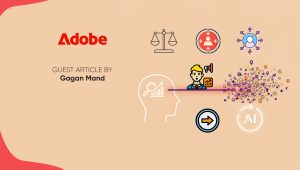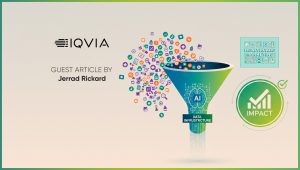 Nothing is more exciting in the arena of Data Analytics than the possibilities of Augmented Analytics. Also referred to as “AI-driven analytics,” their potential to be a game-changing Customer Acquisition tool is remarkable, offering unprecedented insight into untapped potential audiences that marketers can then target and begin validating as a viable segment.
Nothing is more exciting in the arena of Data Analytics than the possibilities of Augmented Analytics. Also referred to as “AI-driven analytics,” their potential to be a game-changing Customer Acquisition tool is remarkable, offering unprecedented insight into untapped potential audiences that marketers can then target and begin validating as a viable segment.
According to leading research and advisory firm Gartner, “By 2020, AI-driven analytics will be a dominant driver of new purchases of analytics platforms.”
Gartner further predicts that “The number of users of modern analytics platforms that are differentiated by AI-driven data discovery capabilities is predicted to grow at twice the rate—and deliver twice the business value—of those that are not.” Is this powerful audience analysis tool on your radar? If it’s not, it should be.
Read More: How Much Omnichannel Is Right For Your Business?
What Is Augmented Analytics?
Augmented Analytics is an automated process powered by sophisticated Artificial Intelligence and Machine Learning capabilities that collect, assesses, analyzes, reviews, and interprets data to provide business owners with actionable insights.
To put it simply, Augmented Analytics does what formerly only analytics experts could do—interprets your data and tells you how to respond. For years, analytics have required expert interpretation. Many an amateur has pulled up their Google Analytics account, stared for an hour or two at the numbers, scratched their head, and said, “Well, I suppose that’s interesting….”
It’s one thing to know that purchases of your flagship product have declined by 3% over the past two years, that you’ve had a decrease in AOV by female customers aged 25–34, and that the percentage of visitors to your website that are males aged 35-44 has increased by 20%, but none of that information means anything by itself (and it certainly doesn’t tell you what actions you should take).
Any marketer would look at those numbers and start to ask questions. Are our Marketing efforts starting to fall flat for this age group? Is this related to some larger trend? Is the increase in males visiting the website a genuine increase, or simply the result of fewer females visiting? Is the decline of purchases of our flagship product related to our decline in average spend among women, or are these separate issues that need to be addressed?
What Should We Do?
That’s the ultimate goal of Augmented Analytics—to revolutionize how businesses large and small use this data without having to hire an expensive data interpreter to explain (or guess at) the meaning of it all.
What’s truly exciting is the possibility of using augmented analytics as a customer acquisition tool, analyzing untapped audiences for their potential as a source of profit.
Augmented Analytics Changes the Customer Acquisition Game
Customer acquisition is too often the result of uninformed or off-the-cuff targeting attempts. More often than not, attempts at audience analysis are pure guesswork or gut decisions, if not simply competitive parity or copy-catting.
This is more often than not a best-case scenario. A massive percentage of brands are quite literally targeting “anyone with money,” which would be funny if it wasn’t so common and such a bad idea.
These aren’t just small brands or inexperienced marketers doing this—mid-market and even some enterprise-level brands are guilty of not leveraging analytics effectively when it comes to customer acquisition. They may do a wonderful job of using data to make decisions on existing customers, but rely too much on gut-instinct, their years of experience, or creative ideas when it comes to acquisition.
Customer acquisition tools that incorporate Augmented Analytics automate the process of identifying valuable new audiences by sifting through large amounts of customer and public data to reveal homogenous audience segments that are ideal for specific Marketing objectives. AI-driven insights are the key—marketers can walk into strategy meetings armed with solid recommendations and reasoning when outlining targeting and engagement tactics, information that can’t be misinterpreted or argued against.
Previously, the golden question for digital marketers was how to use Google Analytics, Facebook Insights, and other sources of customer data to decide which steps to take to increase conversions and generally improve their return on ad spend.
But now, the golden question is this: what specific target audience groups are potentially interested in the solutions our brand offers, and how can we engage them effectively?
Audience Analysis Tools Using Augmented Analytics Become More Necessary Every Day
In the hyper-competitive modern digital landscape, where the low-hanging fruit has long-since been picked, customer acquisition tools that leverage Augmented Analytics will become not simply helpful, but vital to the success of all companies.
The world’s largest economy has been saturated for a long time, and the world’s second-largest economy is rapidly on its way. Markets that were once thought permanently closed in countries that were unstable have now blown wide open. Competition becomes more cutthroat by the minute. Businesses that wish to have global reach cannot survive without powerful tools to both find the most profitable audiences for their brand’s unique offerings and to then target those audiences effectively.
Augmented analytics is the future, and it’s here today. Are you prepared?
Read More: The Future of Artificial Intelligence Is Job Augmentation, Not Elimination


















